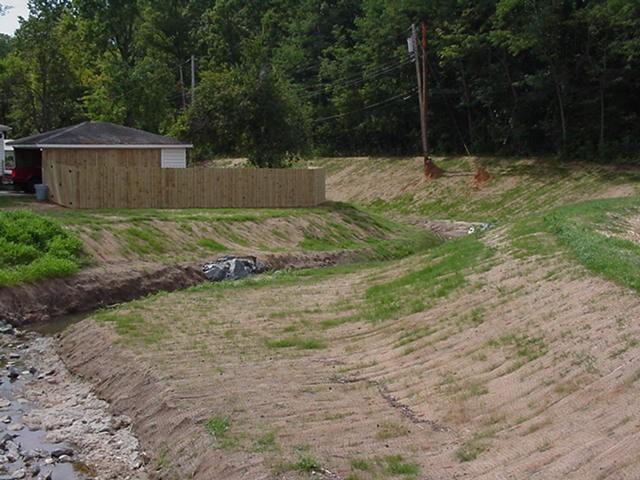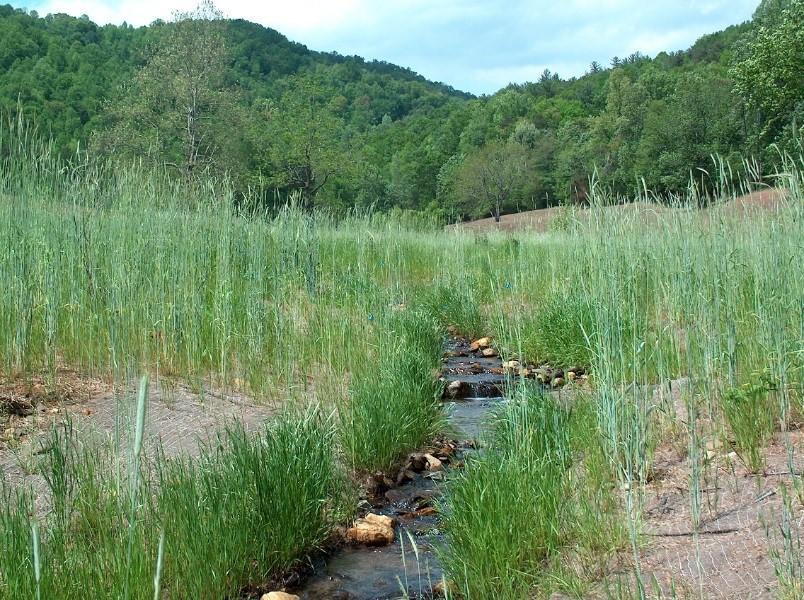Stream Restoration Projects
Stream Restoration
The waters of our state are vitally important to the well being of our environment, economy and citizens. Properly functioning streams provide clean drinking water, aquatic habitat and boundless recreational opportunities. Many of our streams have been altered either directly or indirectly by changes that have occurred in the surrounding landscape. Through modern restoration techniques, these negative impacts can be undone and streams can be restored to look and function as they once did. NCLWF has already restored hundreds of miles of streams across North Carolina.
Look below for a few examples.
Stream Restoration Types
Stream restoration projects employ a wide range of designs and techniques to stabilize eroding stream banks and to restore the natural and productive aquatic habitats. Where feasible, some projects involve restoration of the stream and its entire floodplain; changing a straight-cut-ditch back into its original form of meandering stream. Other projects, in areas where infrastructure or other constraints exist, take a more modest approach to restoration by establishing a floodplain bench and rock or wooden structures to allow the stream to flow naturally in just a portion of its original floodplain extent. Still other projects, where degradation is not yet too severe, restore streams by simple replanting stream banks and riparian areas to limit erosion and improve habitat. Three diverse yet successful examples of stream restoration techniques are outlined below.
Restoration - Priority One
Where the land is available and free of structures, it is possible to take a once straightened and eroding stream and return it to it’s natural and stable form of a relatively small stream channel that has access to a large floodplain that involves most or all of the valley. NCLWF has funded many such projects including the restoration of Purlear Creek by the NC Division of Forest Resources. While such projects can be expensive and require large areas of land to be protected by conservation easements, they provide he maximum resource and social benefits by eliminating stream bank erosion, providing excellent water quality and preserving natural and historic landscapes.


Restoration - Priority Two
In urban area or other landscapes where stream courses are constrained by homes and other important infrastructure, stream restoration can still play an important role in preventing stream bank erosion and allowing natural stream process to improve water quality and enhance neighborhoods. Work to slope eroding stream banks back to stable conditions, adding structures to prevent erosion and improve habitat and planting native vegetation can stabilize streams in a modified but sustainable form. NCLWF has worked with many local, city, county, and town governments to achieve environmental and social benefits in many NC communities.
Stream Enhancement
Many times, a stable and valuable stream can be achieved by simply planting native vegetation along streambanks where human activities have removed trees and other plants that provide natural protection to streams. NCLWF has worked with many non-profit and State agencies to protect streams through such planting efforts. The example seen below in the New River basin shows recently planted shrubs and trees designed to naturally protect the high water quality, excellent habitat, and beauty of this steam.

